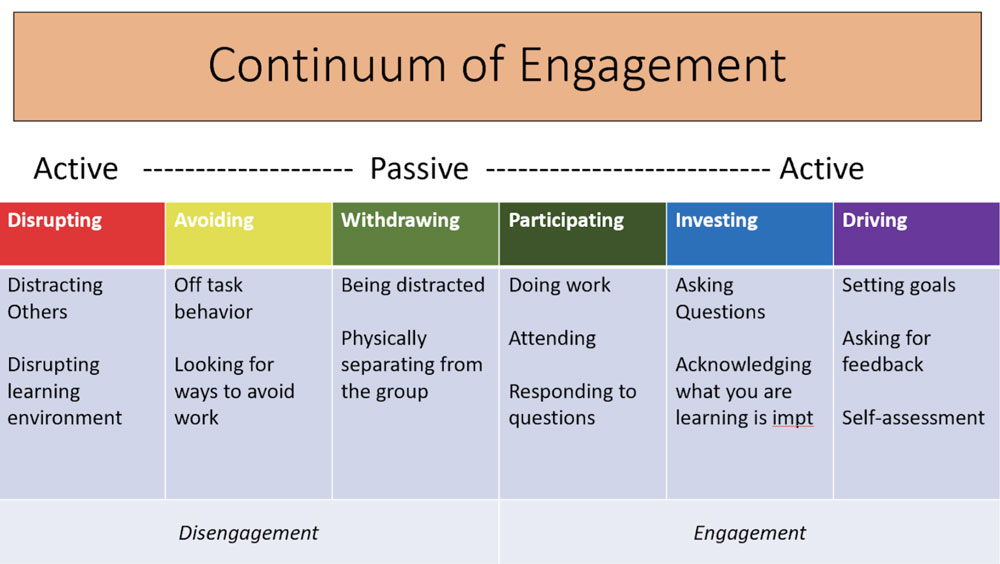I frequently talk with teachers and students about engagement because engaging Generation Z brains can be tricky (yes, even most students know this). The simplest way to describe Gen Z is that they are the first generation of “true digital natives,” because use of the internet is part of their daily life. What that means with regard to brain development is that they are hard wired to process snips of information and frequently shift tasks; on average every 10-12 seconds. Many of the tasks that Gen Z engage in requires passive visualizing (think TikTok).
While this is “the world they live in” the challenge is how to help students understand levels of engagement and self-reflect on academic successes and challenges around engagement. Reading comprehension, paragraph writing, solving multi-step math problems requires engagement beyond 12 seconds. I appreciate Fisher & Frye’s theory and practice around teaching students how to name and assess levels of engagement and the challenges of engaging. The continuum of engagement (visual below) provides common language for students and teachers to use to assess, discuss and self-reflect. Self-reflection helps students identify where they need to set goals around self-regulation, practice lengthier periods of engagement and identify when they are struggling to engage.
Of course there is much to understand about the why behind difficulties with engagement which will be the focus of the next blog.


